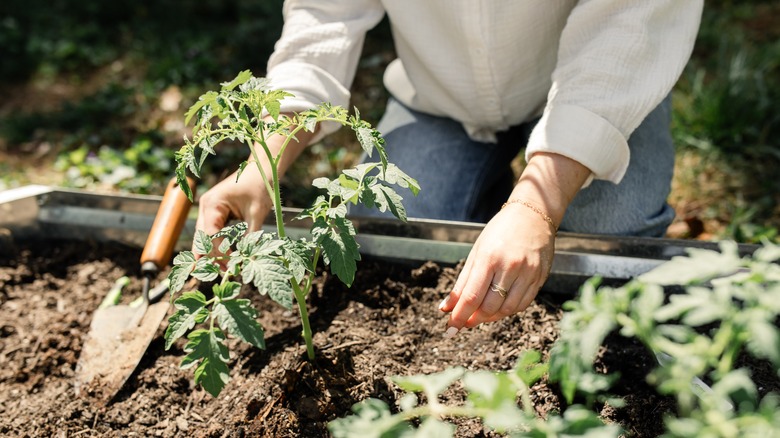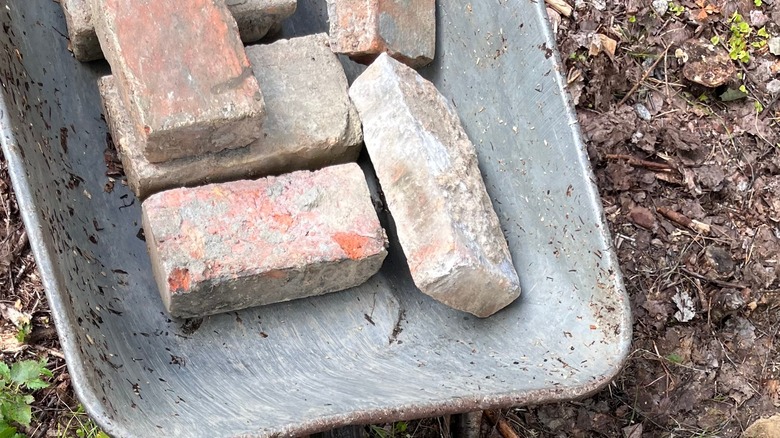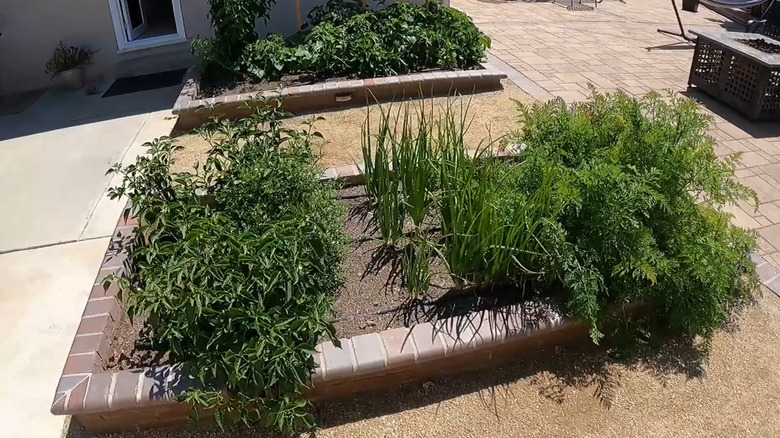Build An Affordable Raised Garden Bed By Reusing Old Bricks
We may receive a commission on purchases made from links.
Have a pile of old bricks lying around from, say, a recent renovation? Then you're probably frantically Googling creative DIY projects to upcycle leftover bricks to use in your home and garden just to get them moved off your lawn. Transforming a jumble of fired clay blocks into a raised garden bed is surprisingly easy — we liken it to building with Legos for adults — and enduringly useful. Think of all the veggies you could grow! Plus, if the bricks are already sitting in your backyard, you don't even have to move them that far. You can either simply stack bricks in alternating rows by hand, or you can get serious and use mortar. Either way, this is a job for an afternoon or, at maximum, a weekend.
While cinder blocks are potentially toxic, depending on what they're made of, and treated wood may contain problematic preserving chemicals like Micronized Copper Azole (MCA), Chromated Copper Arsenate (CCA), and creosote, bricks are crafted from clay, which is essentially just mud. In almost all cases, they're safe for use in the garden. There's an exception for where they were sourced; for example, bricks sourced from a former factory could have been exposed to harmful contaminants. If you're at all concerned about the bricks you've sourced, grow only ornamental plants in the garden bed you create or look for some different bricks. Outside of being the safer option, health-wise, other benefits to using bricks for raised beds include the chance to save an item from the landfill and being able to take advantage of the old-timey aesthetic and uniqueness each old brick brings to your backyard.
Sourcing the bricks you need to build a sturdy garden bed
To keep the cost of bricks at zero, ask a family member or neighbor who you know is replacing their brick patio if you could take the old bricks off their hands. A Buy Nothing group is the perfect way to furnish your garden on a budget — or for free! Post a request to your local group, which you can find on the Buy Nothing website. Bricks are also pretty affordable to buy if you can't find anything for free. For example, Lowe's sells really attractive Titan Florida 7.75 x 3.75-inch red clay bricks for just over a quarter each. Or stick with the upcycled ethos and get genuine reclaimed Hudson River flat no frog bricks for $1.50 each from Chief Bricks.
There are two ways to build your garden bed wall — with mortar or without. If you choose to go without mortar, you'll need to keep the walls low for safety. Three or four rows of bricks high is the maximum. For this method, all you really need is a large T-square and some gloves to protect your hands. Using mortar allows you to build taller walls but is also more work. You'll need some concrete — we like Mastercraft fast-setting concrete, at just over $6 per 50-pound bag at Menards — and some mortar — Walmart sells 60-pound bags of Quickrete stone veneer mortar for $40. You'll also need some timber planks, pre-cut to your bed's dimensions, to create a form or mold. Also get a shovel, a cement or mortar spreader, a rubber mallet, and level.
How to lay old bricks for a raised bed, with or without mortar
It's easy to build a brick raised garden without mortar since all you need to do, per Suburban Oasis Gardening, is stack rows of bricks on your lawn. Use a T-square to create perfect 90-degree corners. As you build your rows, alternate the bricks' location so that the crack between two bricks falls in the middle of the brick below. If you want something a bit fancier, stack the bricks vertically on the diagonal instead of straight on top of one another, à la The Girl Gardener.
The process is a little more complicated with mortar. Use string and stakes to define the raised bed, then dig a hole one brick-width deep. Create a double-sided frame, also called a form, using treated wood planks designed for outdoor use. Mix your concrete according to the manufacturer's instructions and pour it into your form. Level it and leave it to set — that typically takes around 24 hours. Remove the wooden planks and you're ready to start laying bricks!
Apply the mortar thickly to the concrete base (or, later, the brick below) and press the new brick down on top of it. Check that it's level and scrape away any excess mortar, then repeat the process until all your rows are finished. Use broken bricks for the corners, if needed, and leave some gaps near the base for drainage. However you choose to build a garden, be sure to put down a layer of landscape fabric or cardboard — it's one of our master gardener's top tools for banishing pesky weeds from raised beds.


